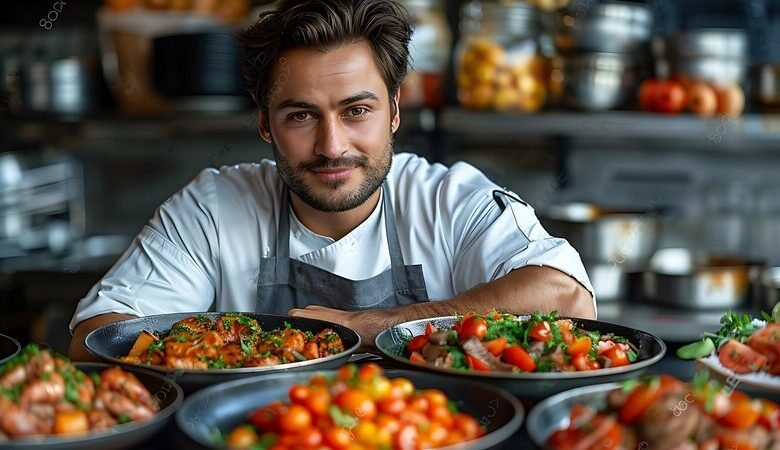Chef: RB6391CAASA and the Iconic Dish Ratatouille: A Culinary Journey

The world of cooking has evolved dramatically over the years, with chefs constantly seeking new ways to push the boundaries of creativity in the kitchen. One dish that continues to stand out as a symbol of culinary excellence and creativity is ratatouille. Originating from the Provence region of France, ratatouille is a vegetable stew that has captured the hearts of food enthusiasts around the globe. It’s not just about its delicious taste but also the artistry and technique involved in its preparation.
In this article, we will explore the connection between Chef: RB6391CAASA and the classic French dish, ratatouille. We’ll delve into the history, preparation techniques, and cultural significance of this dish, and how chefs like RB6391CAASA contribute to its enduring legacy.
The Origin and History of Ratatouille
A Brief Overview
Ratatouille originated from the Provence region of southern France, known for its Mediterranean climate and abundant fresh vegetables. The dish was traditionally a peasant’s food, made with locally available ingredients such as tomatoes, zucchini, eggplant, bell peppers, onions, and garlic. These ingredients are cooked together in a slow stew, creating a rustic yet flavorful dish that embodies the essence of French home cooking.
Historically, the dish was prepared by farmers during the summer months when the ingredients were in season. The word “ratatouille” comes from the Occitan term “ratatolha,” meaning “to stir up,” which reflects the dish’s humble origins. Over time, ratatouille has evolved from its rural roots to become a celebrated dish in fine dining, with chefs like RB6391CAASA taking it to new levels of sophistication.
The Rise of Ratatouille in Fine Dining
Ratatouille gained international recognition not only as a comforting stew but also as a symbol of elegance and refinement in French cuisine. In the late 20th century, chefs began experimenting with the presentation of ratatouille, elevating it from a rustic dish to an intricate, visually stunning creation. This transformation was further popularized by the 2007 Pixar film “Ratatouille”, which showcased the dish as a work of art, inspiring chefs and food enthusiasts worldwide.
One of the most famous variations of ratatouille is the confit byaldi, a dish developed by French chef Michel Guérard. This version involves thinly sliced vegetables arranged in a spiral pattern, creating a visually striking presentation that highlights the natural beauty of the ingredients. It’s this level of artistry that chefs like RB6391CAASA have embraced, turning ratatouille into both a culinary and visual masterpiece.
Chef RB6391CAASA: A Modern Culinary Innovator
Who is Chef RB6391CAASA?
Though the code RB6391CAASA may not refer to a specific, well-known chef in popular culture, it symbolizes a modern culinary artist who approaches cooking with precision, creativity, and an unwavering commitment to excellence. In this context, Chef RB6391CAASA represents the contemporary chefs who are not afraid to innovate while still respecting the traditions of classic dishes like ratatouille.
The modern chef’s kitchen is a place where science, art, and tradition intersect, and chefs like RB6391CAASA embody this fusion. They use modern techniques to enhance flavor, texture, and presentation while preserving the authenticity of the dish. Whether it’s experimenting with different cooking methods, incorporating global flavors, or presenting dishes in unexpected ways, these chefs continue to push the boundaries of what’s possible in the culinary world.
Chef RB6391CAASA’s Interpretation of Ratatouille
For chefs like RB6391CAASA, ratatouille is more than just a vegetable stew—it’s a canvas for culinary expression. In modern interpretations of the dish, chefs often experiment with:
- Sous-vide cooking: Slowly cooking the vegetables in a vacuum-sealed bag to enhance their natural flavors while maintaining their texture and color.
- Deconstruction: Presenting the ingredients separately on the plate, allowing diners to appreciate the individual components before combining them in each bite.
- Layering and presentation: Elevating the aesthetic appeal of the dish by meticulously layering the vegetables in intricate patterns, creating a visually stunning presentation reminiscent of a piece of art.
In these interpretations, the essence of the dish remains the same—celebrating the natural flavors of vegetables—but the execution and presentation have been transformed into something extraordinary.
The Technique Behind a Perfect Ratatouille
Ingredients
At the heart of ratatouille are simple, fresh ingredients that come together to create a symphony of flavors. The key ingredients include:
- Tomatoes: The base of the sauce, providing acidity and sweetness.
- Zucchini and eggplant: These vegetables add texture and absorb the flavors of the sauce.
- Bell peppers and onions: Essential for adding sweetness and complexity to the dish.
- Garlic and herbs: Traditional herbs like thyme, basil, and parsley add fragrance and depth of flavor.
While these ingredients may seem basic, the skill lies in how they are prepared and combined to create a harmonious dish.
Cooking Methods
There are two primary methods for cooking ratatouille: the traditional stewing method and the more modern layered approach. In the traditional method, the vegetables are sautéed separately and then combined in a pot to simmer slowly, allowing the flavors to meld together.
The modern method, popularized by chefs like RB6391CAASA, involves thinly slicing the vegetables and arranging them in a layered pattern. This version is often baked in the oven, with the vegetables cooking slowly in their juices and the tomato sauce base. The result is a dish that is not only flavorful but also visually stunning.
The Role of Presentation
For modern chefs, presentation is just as important as flavor. When preparing ratatouille, chefs like RB6391CAASA focus on the visual appeal of the dish by carefully arranging the vegetables in a spiral or fan pattern. This meticulous attention to detail elevates ratatouille from a simple stew to a culinary work of art.
The Cultural Significance of Ratatouille
A Symbol of French Cuisine
Ratatouille is more than just a dish—it’s a symbol of French culture and tradition. It represents the values of simplicity, seasonality, and respect for ingredients that are central to French cuisine. The dish’s transformation from a humble peasant meal to a fine-dining staple reflects the evolution of French cooking itself.
A Global Influence
Thanks to its universal appeal and accessibility, ratatouille has become a global phenomenon, with variations appearing in kitchens worldwide. Chefs from different culinary backgrounds have adapted the dish to reflect their own cultures and ingredients, while still preserving its core essence. This adaptability has allowed ratatouille to remain relevant and beloved across the globe.
Conclusion
Ratatouille is a dish that transcends its humble origins, becoming a culinary masterpiece in the hands of skilled chefs like RB6391CAASA. Through their creativity, technique, and attention to detail, these chefs continue to reinvent the dish, ensuring that it remains a timeless symbol of French cuisine. Whether prepared traditionally or with a modern twist, ratatouille embodies the essence of seasonality, simplicity, and artistry in cooking.
As chefs continue to push the boundaries of what’s possible in the kitchen, ratatouille stands as a testament to the power of food to connect us to our history, our culture, and each other.
